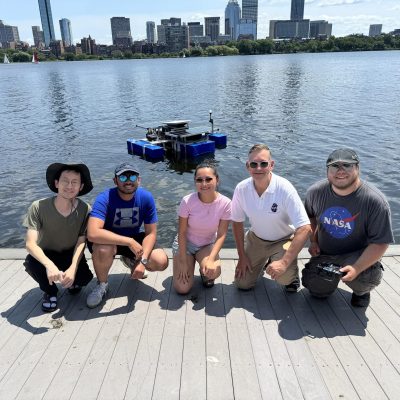Vehicle Design & Engineering
The design of an aerospace vehicle requires not only depth in a number of disciplines, but also the ability to integrate and optimize across these disciplines so the result is greater than the sum of the individual parts. Vehicle Design & Engineering includes the design, development, construction, testing, and operation of vehicles that operate in the Earth’s atmosphere or in outer space and the materials and systems that comprise these vehicles. Flight vehicles are subjected to demanding conditions in highly dynamic environments such as those caused by changes in atmospheric pressure and temperature, with structural loads applied upon vehicle components. Key challenges being addressed include sustainable aviation in the light of climate change, access to space, and deep space exploration.
In contrast to rocket engines which carry both fuel and oxidizer, air-breathing propulsion systems use atmospheric air to oxidize the liquid fuel. These propulsion systems include jet engines: turbofans, turbojets, and turboprops, all of which involve turbomachinery as a core capability, plus ramjets and scramjets. An overall theme in the air-breathing propulsion research is the enhanced integration of propulsion systems and airframes, which can allow step increases in vehicle performance. The field of air-breathing propulsion involves disciplines in science and engineering such as fluid dynamics, turbomachinery aerodynamics, thermodynamics, and materials and structures as well as the integration of knowledge between these disciplines.
Space propulsion comprises the propulsion technology required to reach space, as well as that which can be used to maneuver in space. The first category (space access) remains confined to chemical rocketry, although some attempts continue to be made at electromagnetic or other alternative means of high-g propulsion. The in-space category, however, has evolved towards the use of more mass-effective types of thruster, such as Electric Propulsion rockets, solar sails, or electrodynamic tethers. The key difference, in this case, is the possibility of accumulating momentum for a long time, at the very low rate allowed by the limited supply of power available in space. Plasma science and technology are extremely useful for a wide range of chemical applications such as combustion, fuel production, or CO2 conversion.
Fluid dynamics play a major role in virtually all aerospace vehicles, be it in their external flows, their internal propulsive flows, and also in secondary systems such as heat transport. The related discipline of Aerodynamics focuses on the forces imparted by the external flow on the vehicle, typically in the interest of maximizing flight performance. These disciplines have greatly benefited from the tremendous increases in available computational power over the last half-century, and current research focuses on the development of computational methods for flows spanning the entire Reynolds and Mach number ranges occurring in aerospace, from small UAVs to transonic transports, to hypersonic vehicles. These methods address both the analysis of existing bodies and also the aerodynamic design of new body geometries. Current research also focuses on wind tunnel and flow-rig experiments to investigate complex flow phenomena and to provide validation data for new theoretical and computational models.
Materials and structures have long been a core discipline in aerospace engineering, and many materials and structures advances have been borne out of the aerospace industry over the past decades, e.g., carbon fibers and carbon fiber advanced composites. The study of materials and structures addresses the broad context of aerospace vehicle and systems design, plus extensions beyond the traditional aerospace domain. Current faculty pursue research and teaching interests in computational modeling of materials and structures, fabrication and design of hybrid nano/micro materials, understanding and modeling of basic composite material and structural behavior/response, structural design, failure, and safety considerations, MEMS/NEMS materials and structures topics, additive manufacturing, among others.
Key focus areas
- Fluids
- Materials
- Structures
- Propulsion
- Energy
- Durability
- Aero-acoustics
- Turbomachinery
- Aerodynamics
- Astrodynamics
- Thermodynamics
- Composites
- Avionics
- Additive manufacturing
Affiliated Labs
- Aerospace Materials and Structures Lab
- Aerospace Computational Science & Engineering Laboratory
- Aerospace Plasma Group
- Design in Chaos
- Gas Turbine Lab
- Hypersonics Research Lab
- International Center for Air Transportation
- Laboratory for Aviation and the Environment
- necstlab
- Small Satellite Collaborative
- Space Propulsion Lab
















